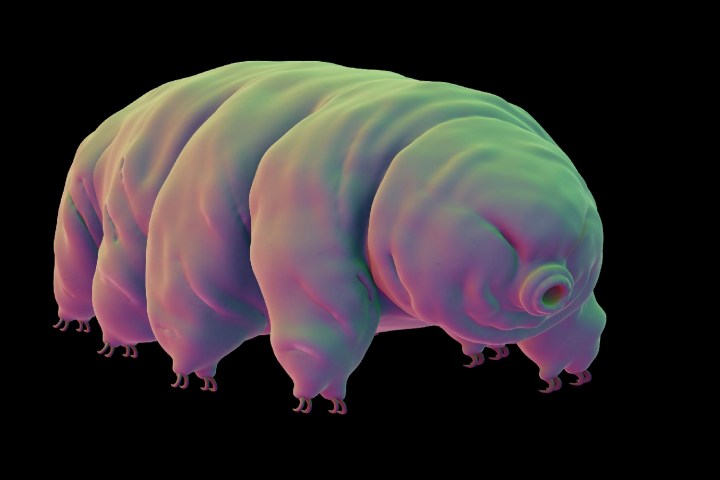
In fact, if you picked any of these you’d be wrong. Well, at least you may be, according to researchers from Harvard University and Oxford University. In a study published in the journal Scientific Reports, Harvard and Oxford researchers concluded that the tardigrade, also known as the “water bear” or “moss piglet,” is likely to be the ultimate survivor when everything’s said and done for the rest of us Earth-dwellers. Less than 1 mm in size, tardigrades are nonetheless astonishingly hardy: capable of being starved for up to 30 years, dehydrated to ridiculous levels, shot into space, or any other assortment of horrible modes of, well, death.
The research suggests that tardigrades are likely to hang around for the next 10 billion years, until they’re wiped out by the death of the sun. Cheerful stuff!
“The main quality that makes things resilient from our perspective is the capacity to withstand heat,” Dr. David Sloan, a researcher in Oxford University’s Department of Physics, told Digital Trends. “To me [it] came as a huge shock [that tardigrades can live at] about 150C for a brief time.”
If you’re wondering why serious scientists would carry out this kind of work, however, have no fear: there’s a good reason for it — and it’s all to do with the ongoing search for extraterrestrial life.
“We have found thousands of exoplanets so far,” Rafael Alves Batista, another researcher on the project, told us. “Many of those are Earthlike and are located in the habitable zone. If the chemistry is right, these places may have the necessary conditions for life as we know it to sprout. Many astrophysical events are a potential threat to life: asteroid impacts, star-star collisions, supernova explosions, gamma-ray bursts, among many other. Therefore, if some of the planets that seem inhospitable today once hosted life, could this life withstand these catastrophic events? That was our motivation.”
In other words, if the tardigrades evolved on Earth, there might be other forms of life on different planets that are as resilient as, or even more resilient than they are. Hey, maybe the space-water bears are the ones sending the crazy alien radio bursts (FRBs) that have baffled astronomers for the last decade!


